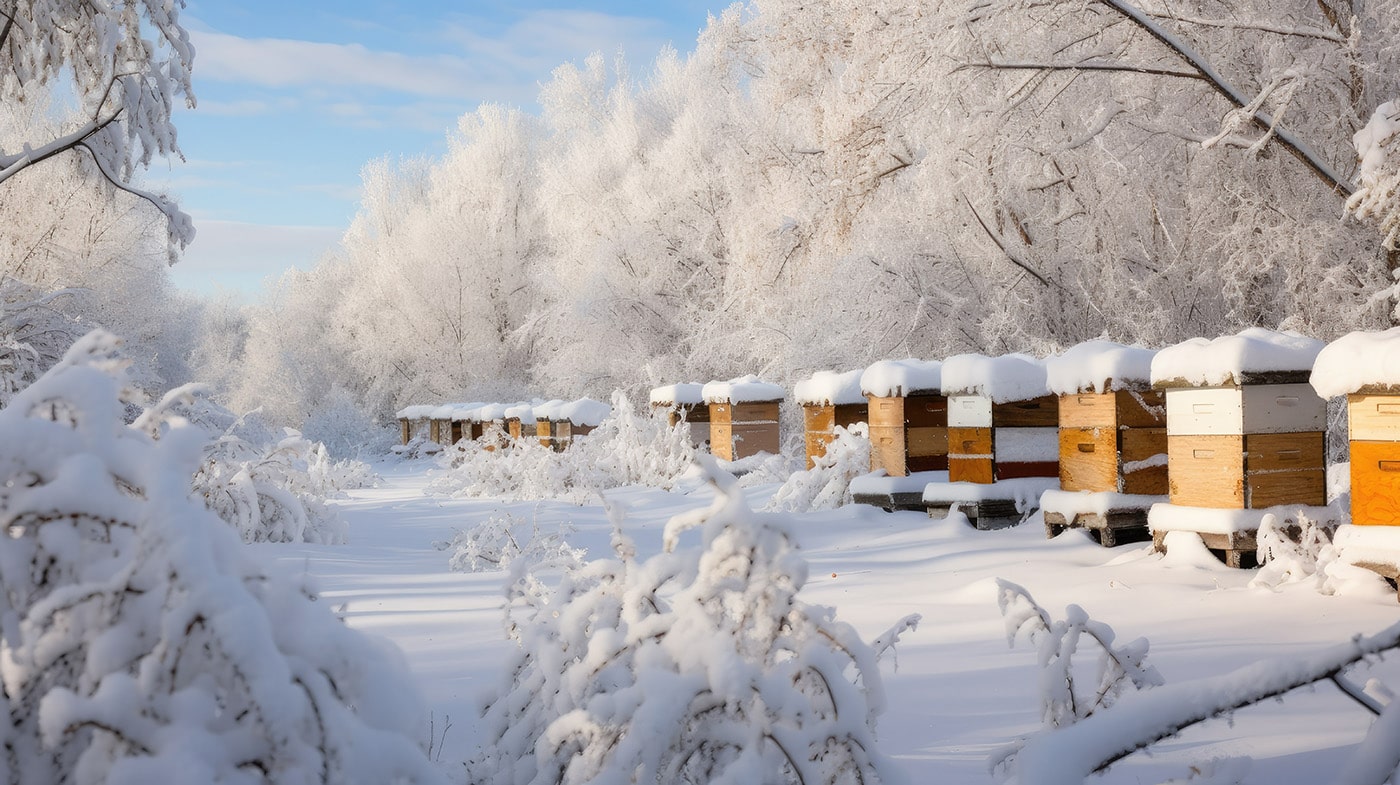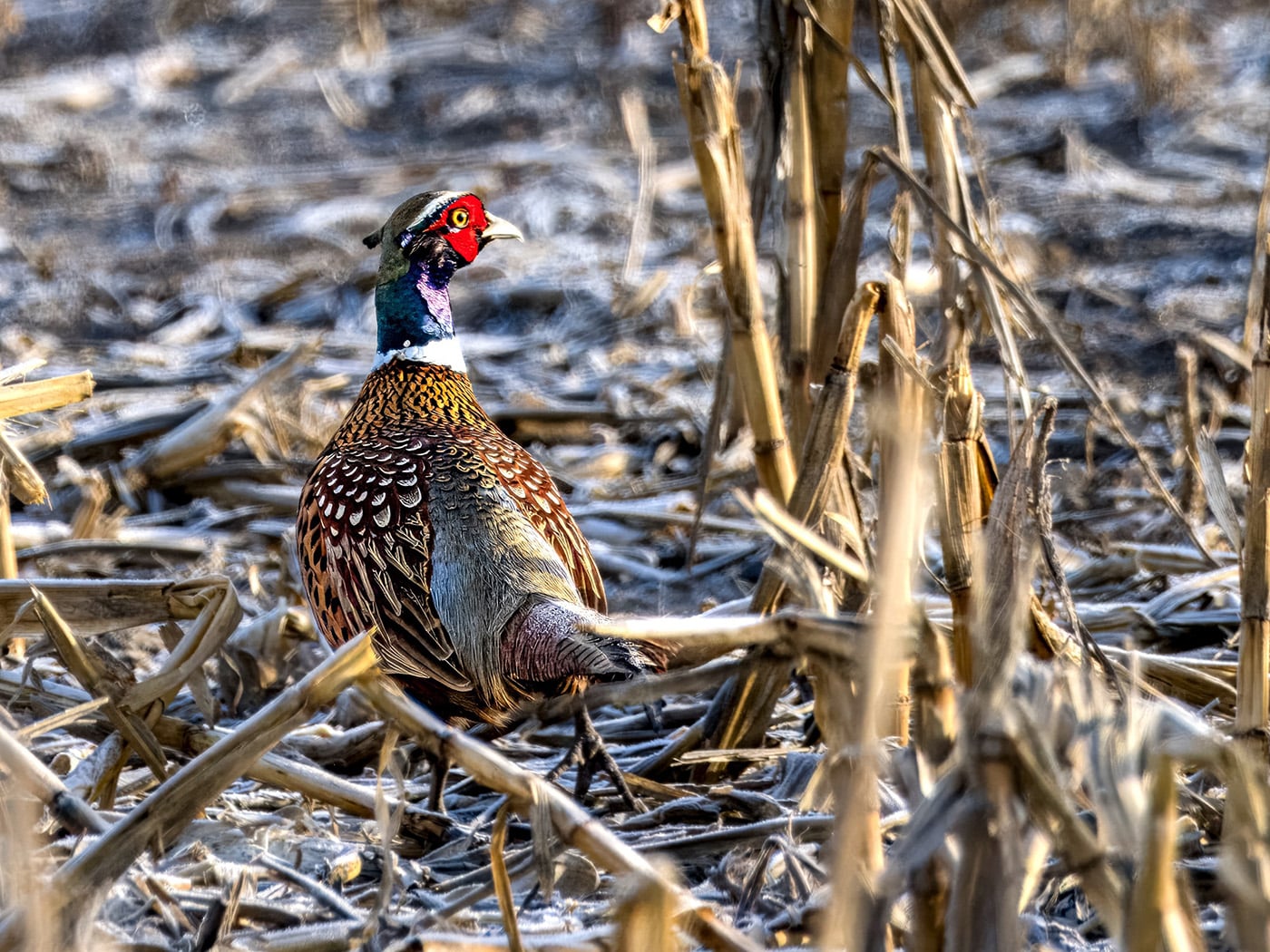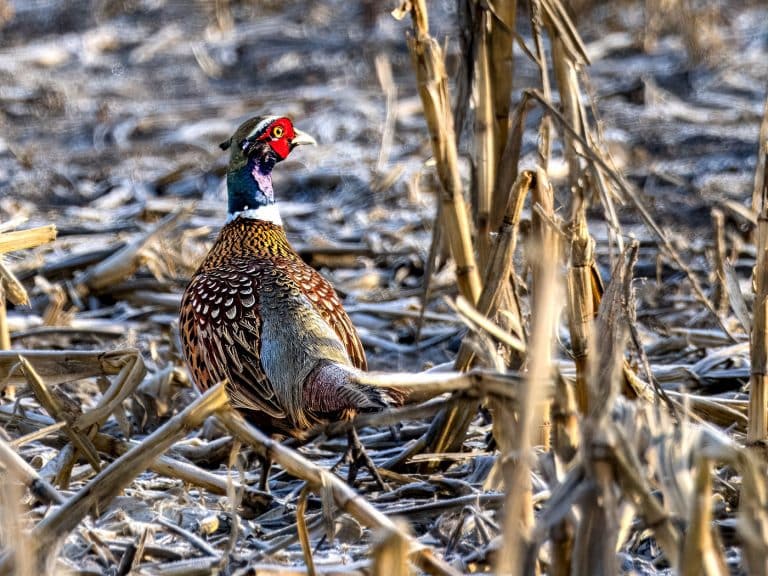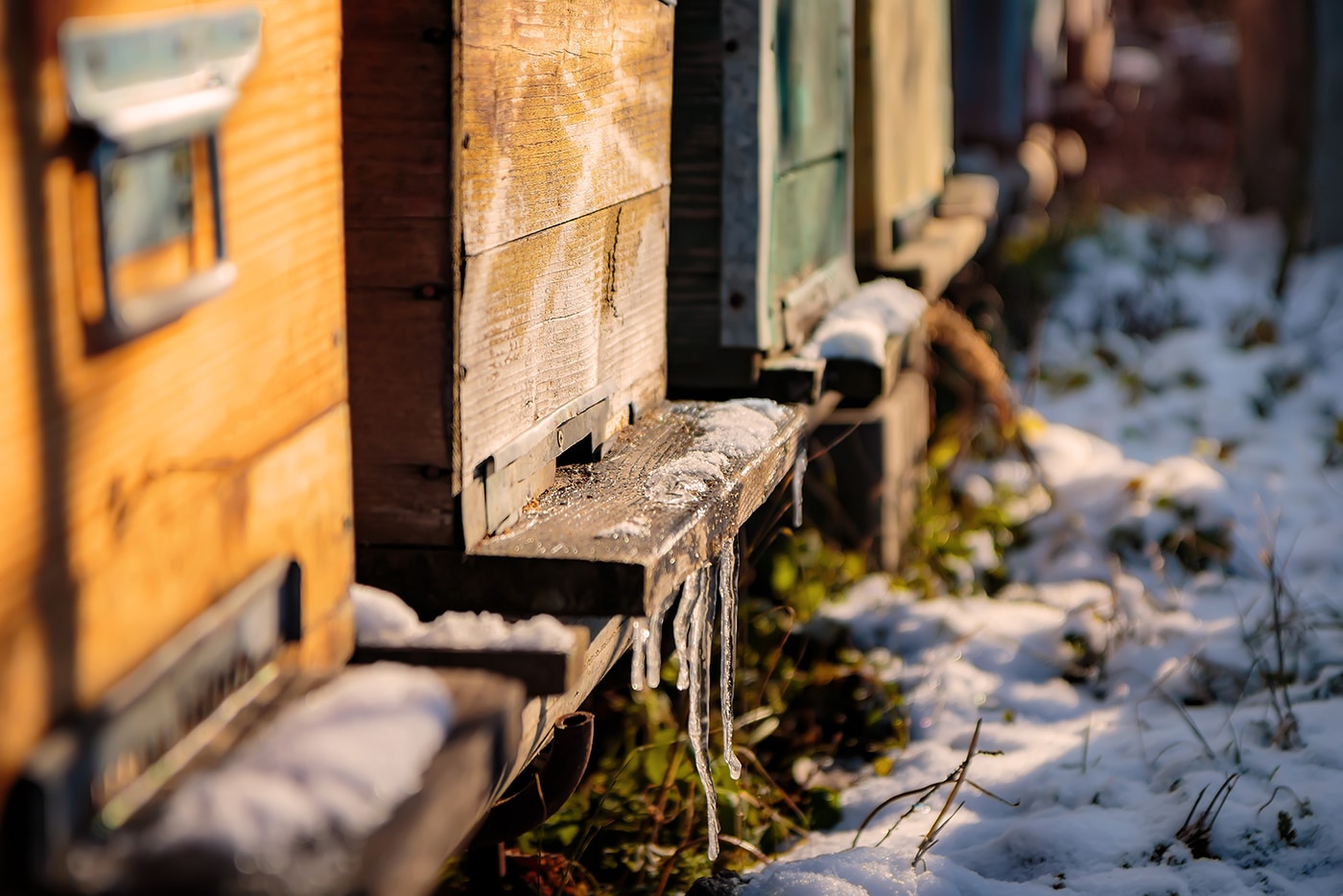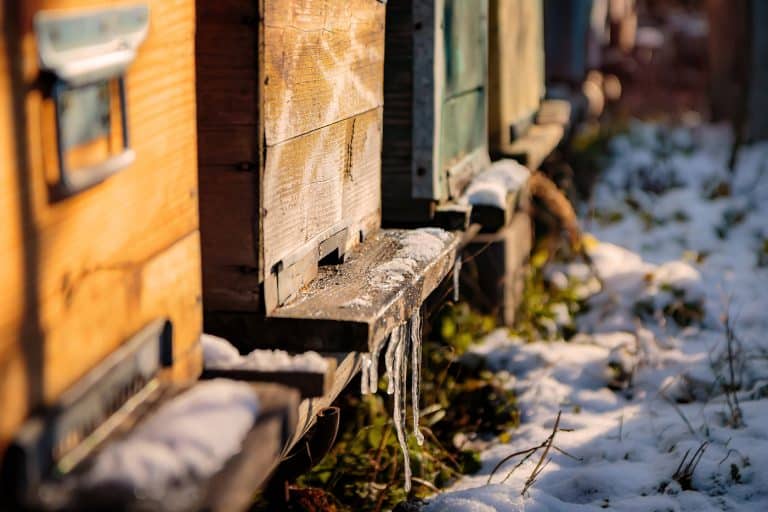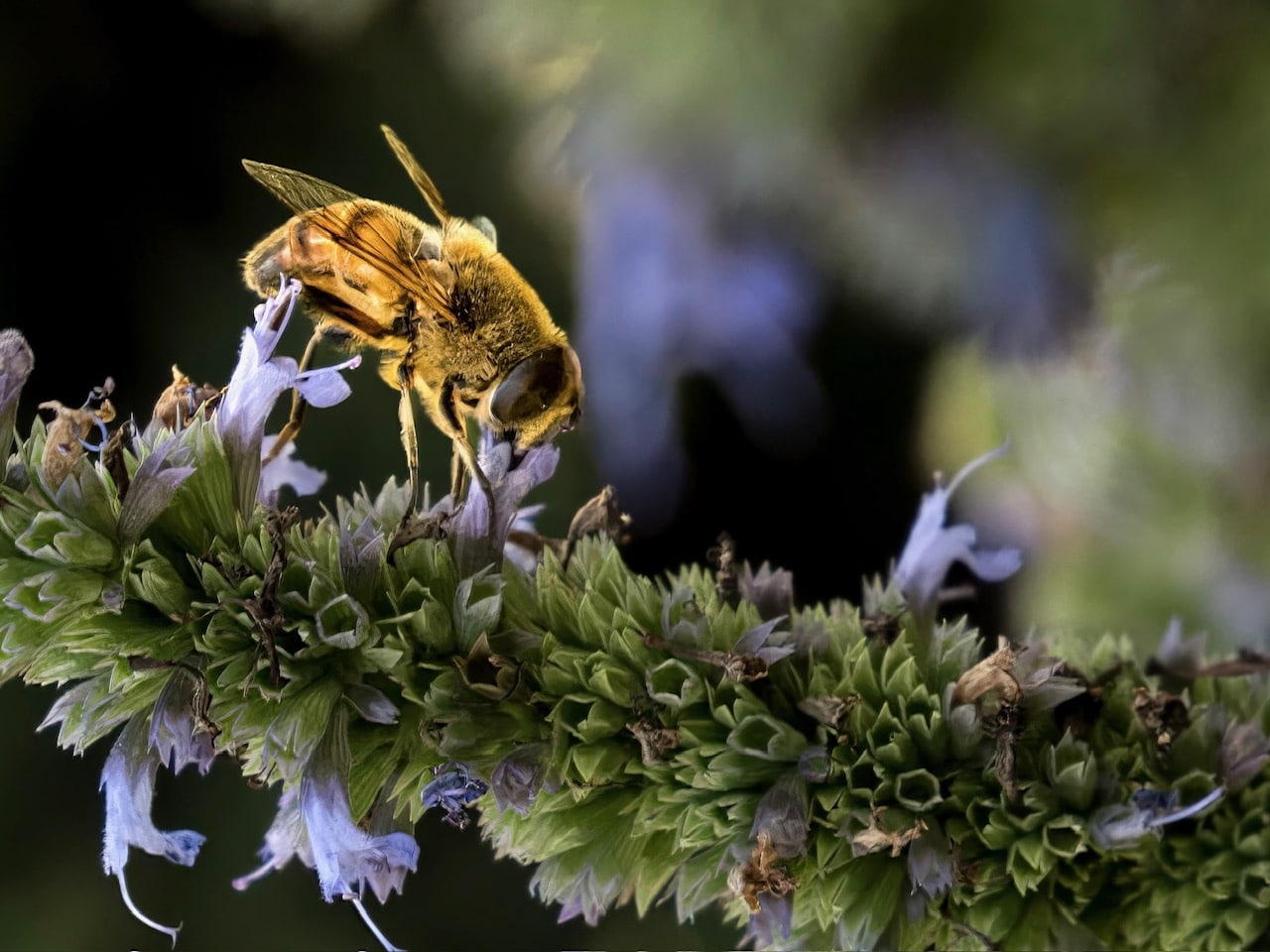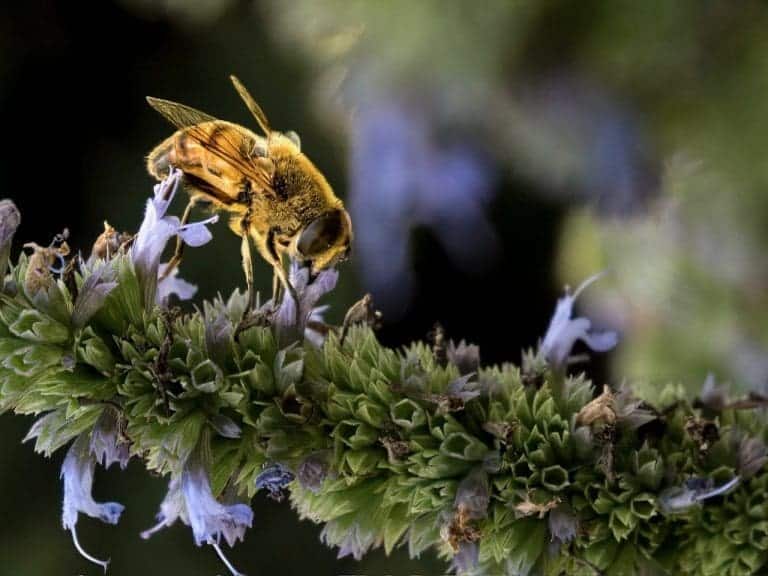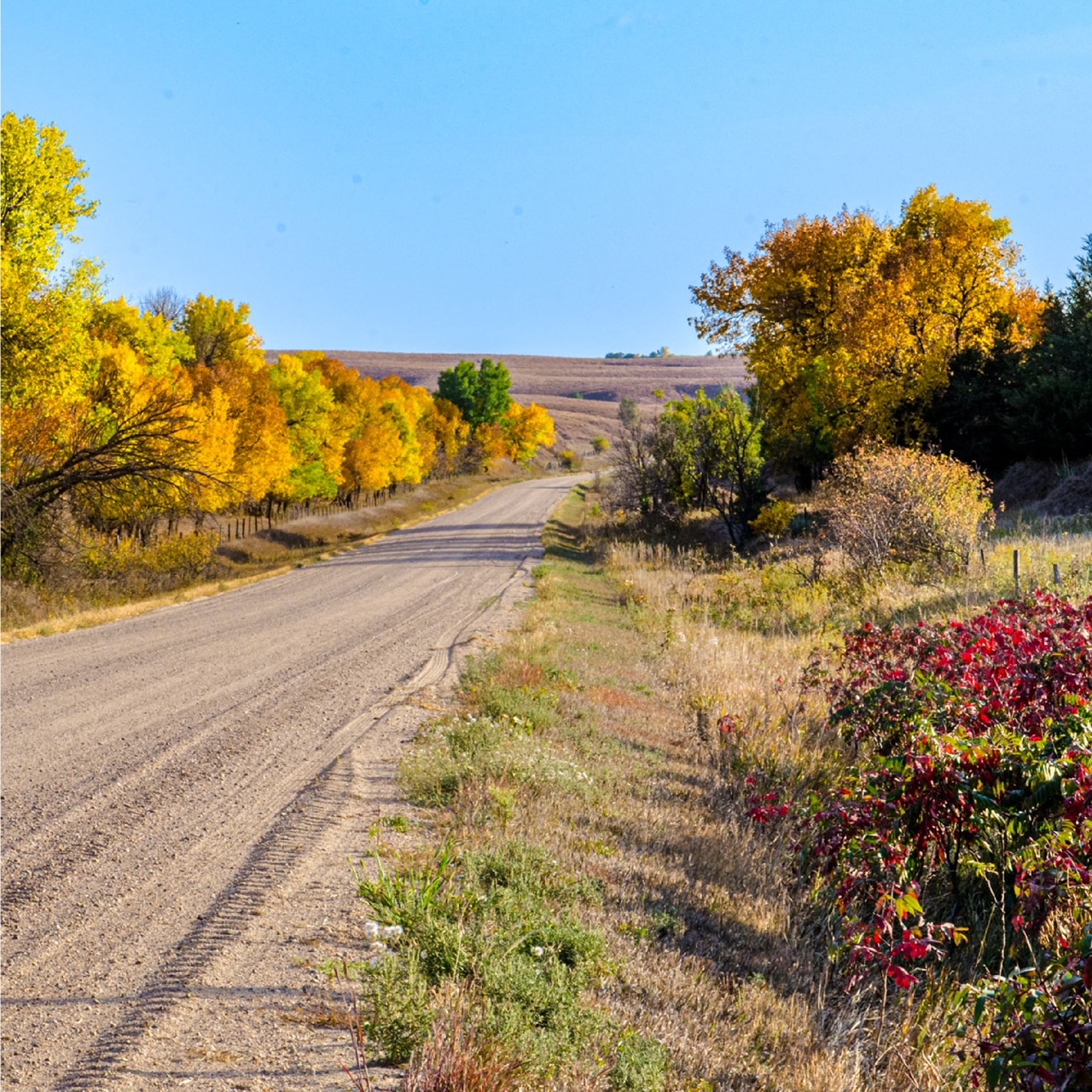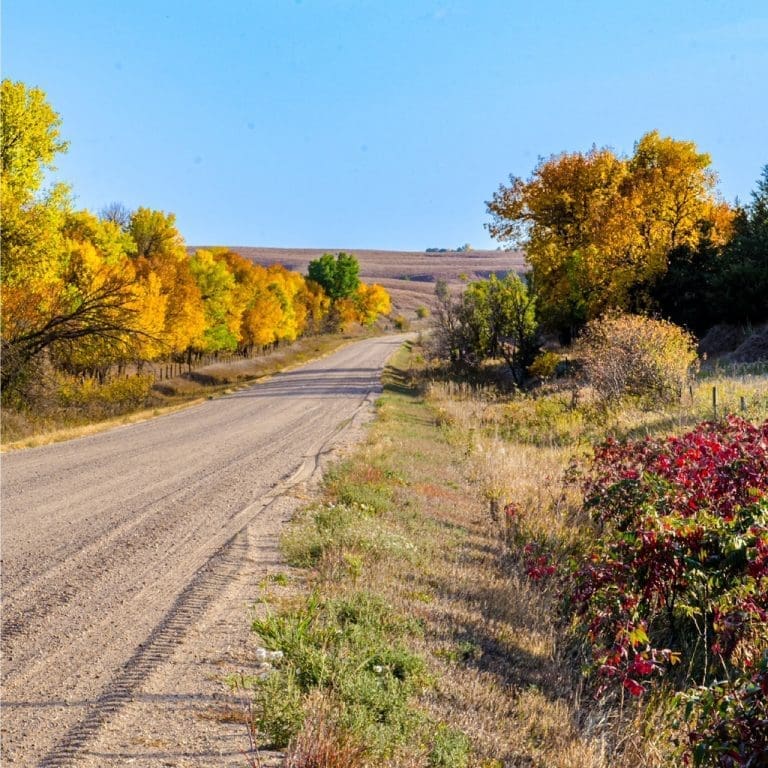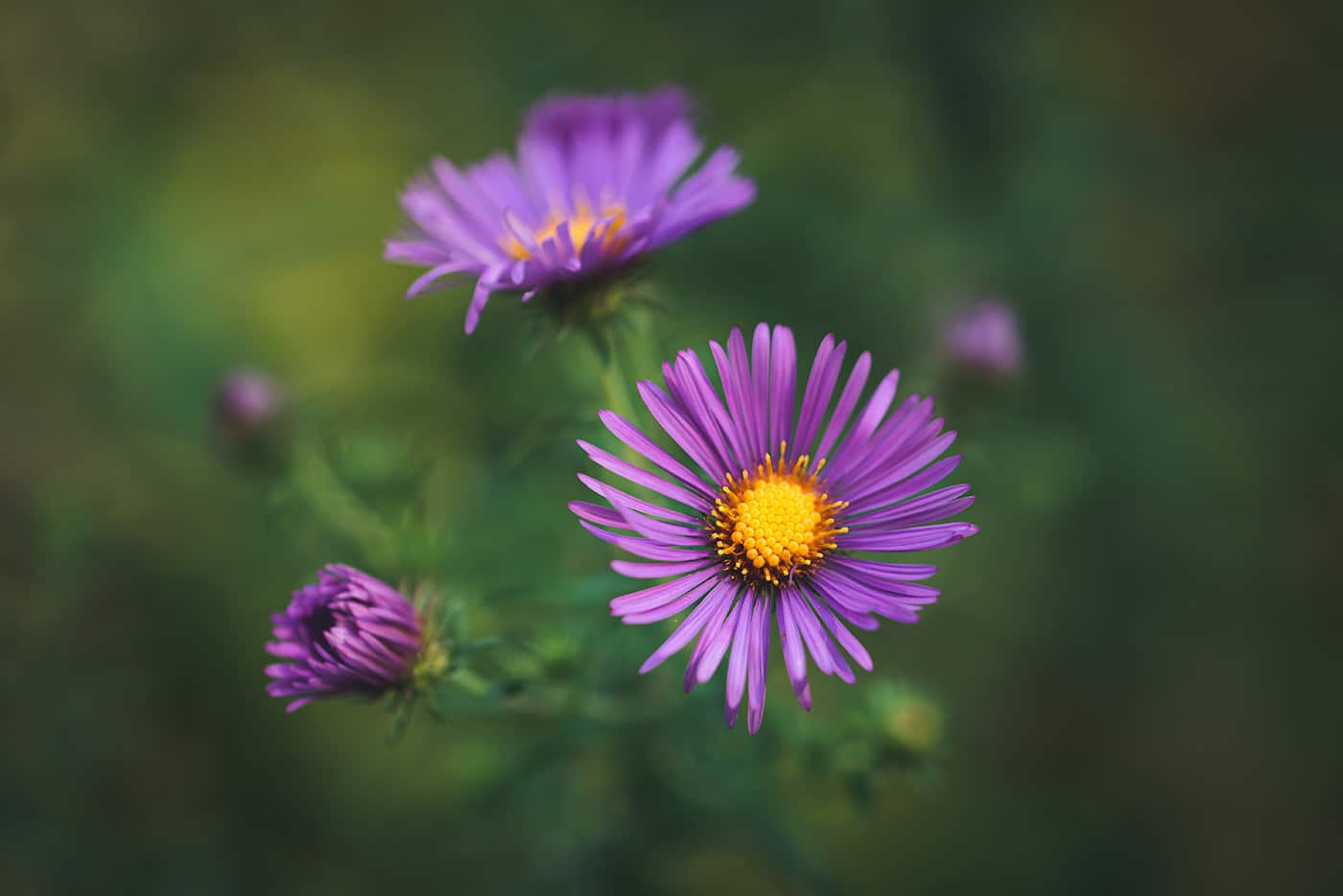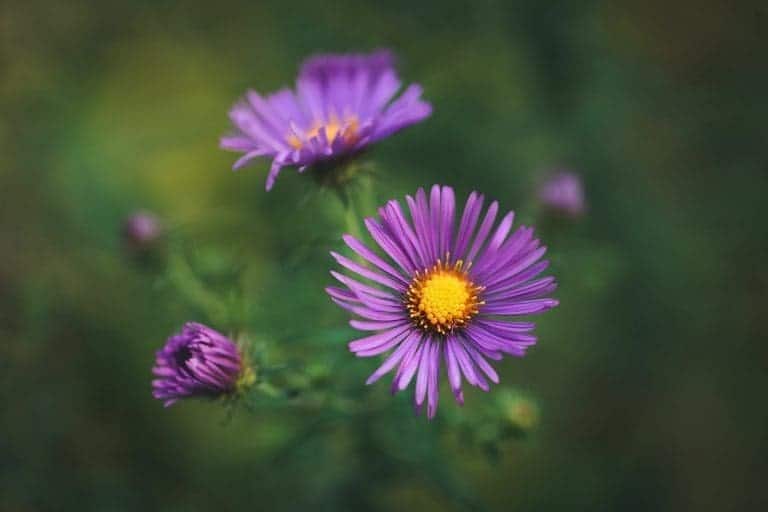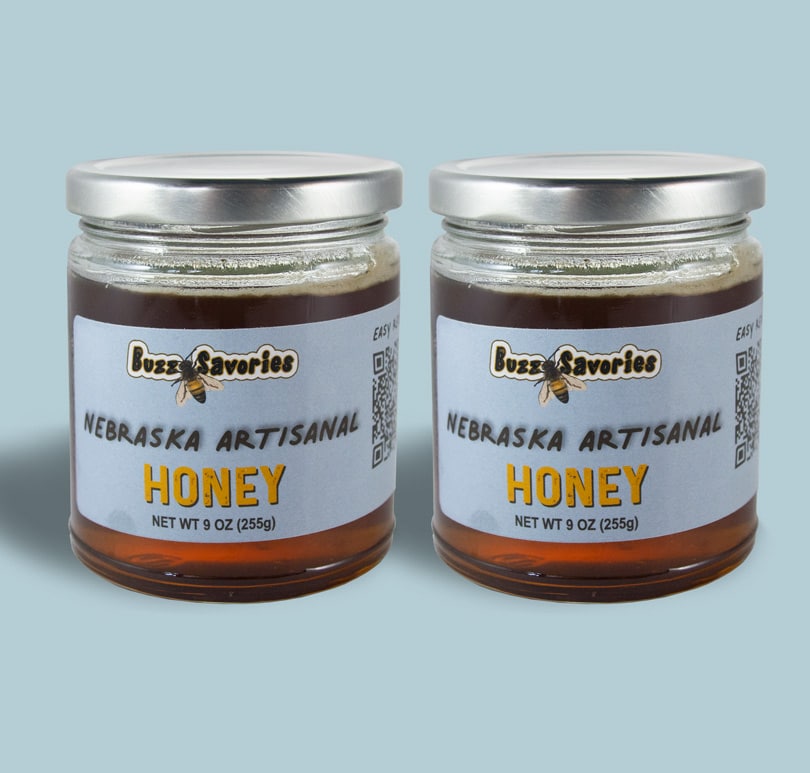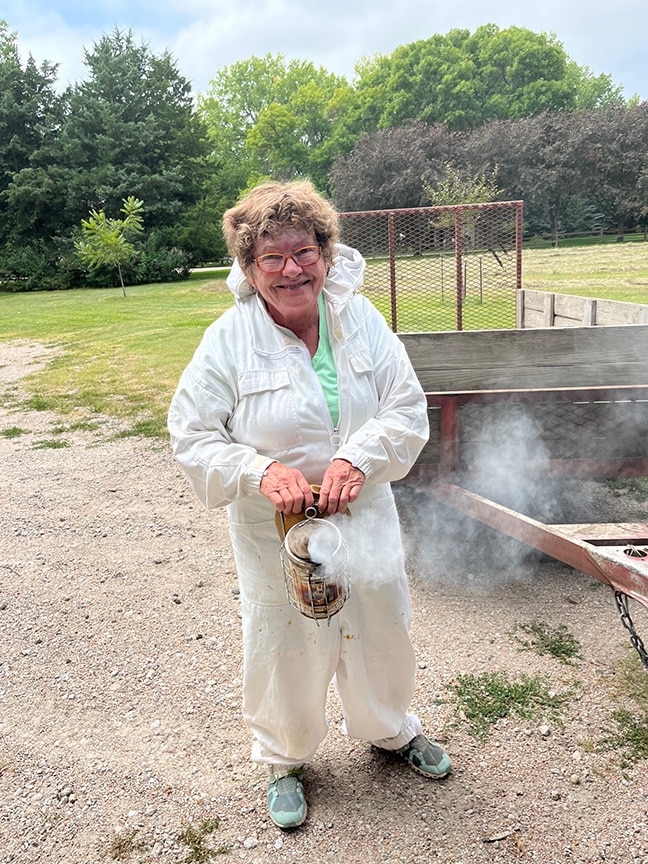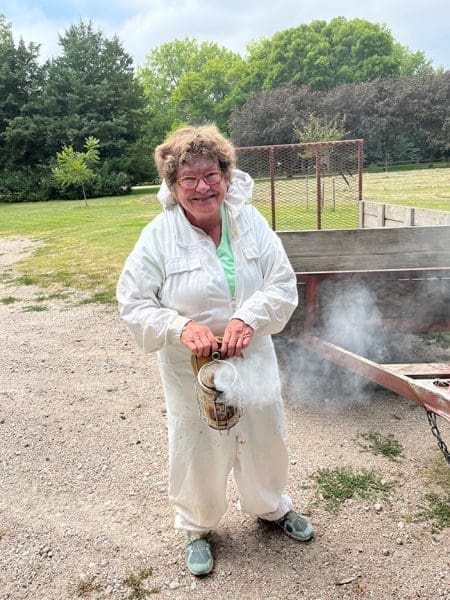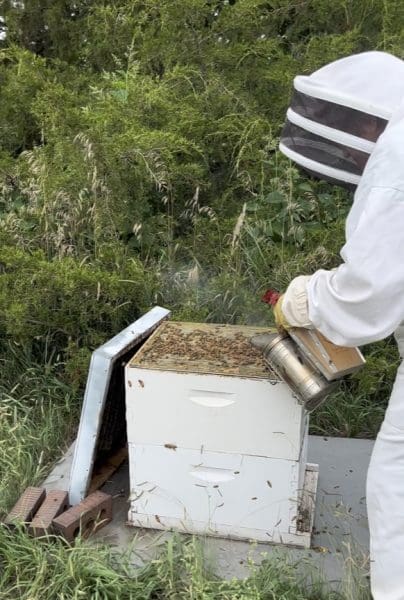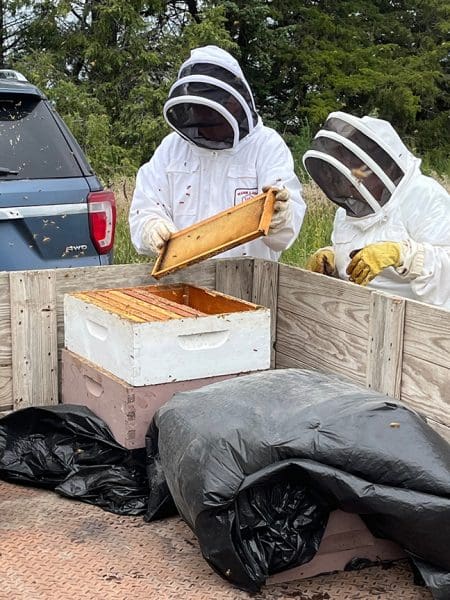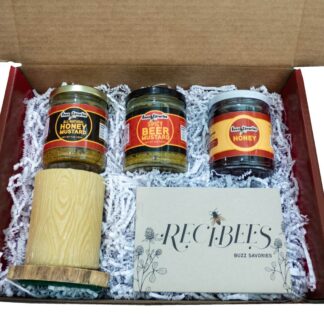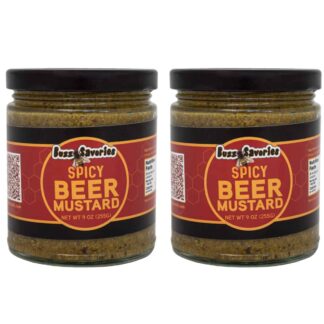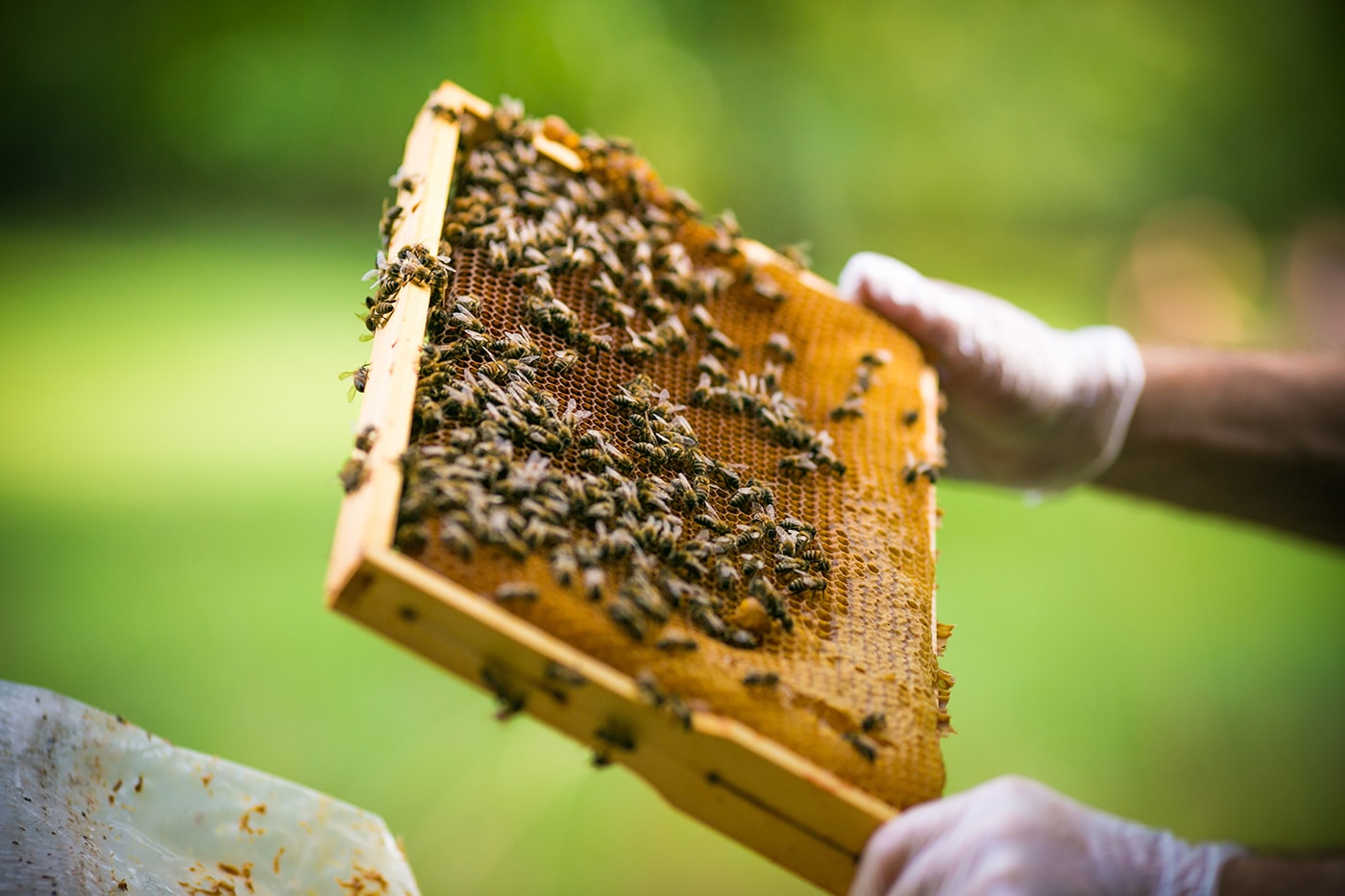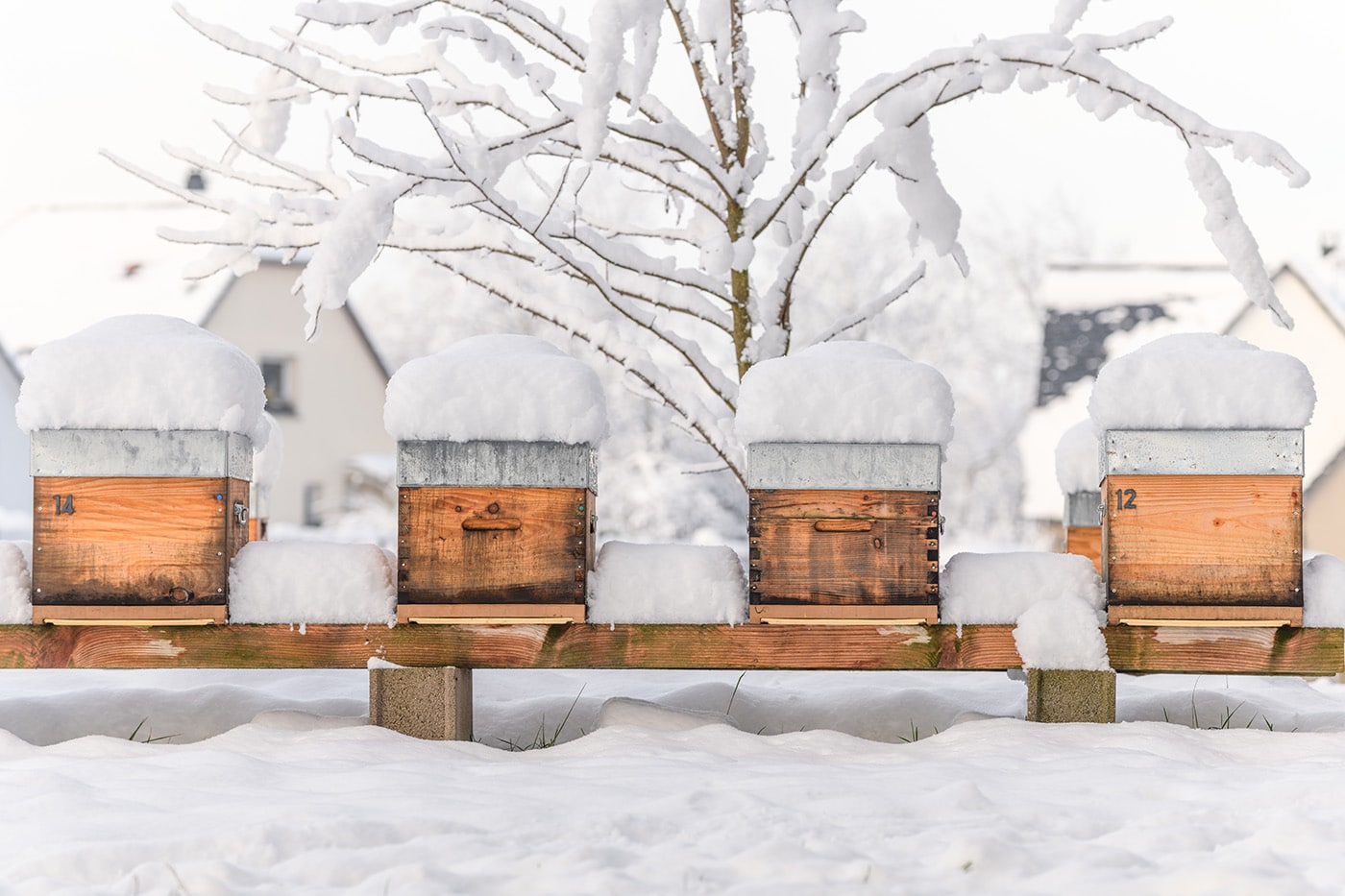
Minus 20 Degrees! And Bee Candy
Buzz Savories bees are maintaining an interior temperature of 70 degrees F whereas Central Nebraska and beyond on the prairies temps dropped to minus 20 degrees F. Nutrition during frigid temperatures concerns beekeepers because the bees form a tight cluster around the queen and shiver their bodies to warm the air around the cluster. The cluster stays tight until temperatures warm to 50 degrees F and above.
Bees will not travel even 2 inches outside the cluster to eat during these critical low temperatures. Food can be 3” from the cluster, and they cannot access it. Bees can starve during these extremely cold temperatures. The cluster travels up in the hive because heat rises, and the hive is warmer under the lid of the hive.
Beekeepers make a candy called Bee Candy and place it under the cover beside the cluster and within easy access for the bees.
I cooked the Bee Candy earlier this month, and it is curious and interesting process. I learned how to make the bee candy from Richard Homer and the video on his website – homershoneybee.com
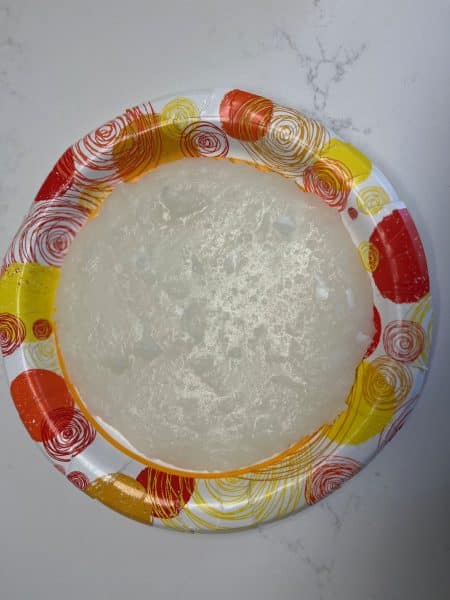
Homer’s Bee Candy
Ingredients
16 oz. water
8 lbs. sugar
Process
- Pour water in a 2 qt. straight sided sauce pan
- Turn heat on high to bring to a hard boil and in the meantime pour the sugar into the water and stir with a large spoon until the sugar dissolves in the water.
- Lower the heat to medium. Continue the boiling process until the liquid reaches 238 Degrees F. Scrape the sides and bottom of the pan as the mixture boils.
- Turn off the heat when candy reaches desired temperature 238 Degrees, and let it cool to 180 Degrees. An interesting phenomenon occurs as it is cooling and crystalizing. The candy will start boiling without the additional heat. It will tur a chalk white as it boils. Crystallization creates heat. Whisk or mix with a hand-held mixer every ten minutes to break up the crystals of sugar. Scrape sides and the bottom to avoid the candy forming large clumps of sugar.
- Pour into paper plates that were sprayed with vegetable oil. Cool.
-
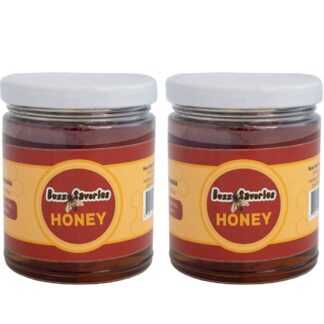
All-Natural & Local Honey
$25.00 Add to cart -
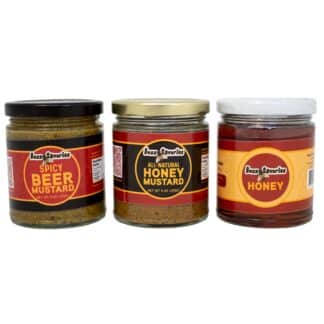
The Sampler
$40.00 Add to cart -
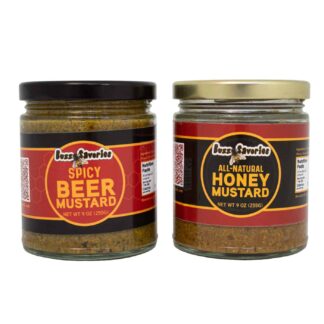
Mix & Match Sets
$25.00 Select options This product has multiple variants. The options may be chosen on the product page

